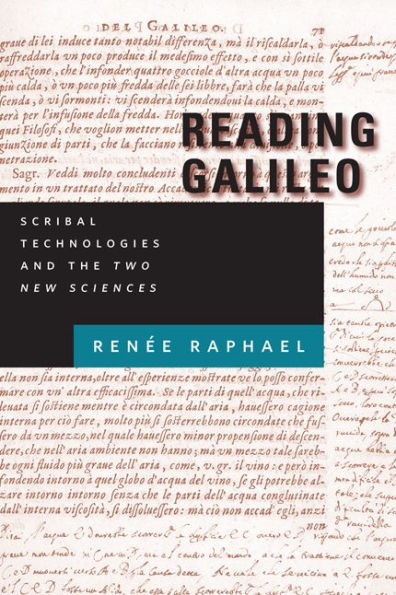

Hardcover
-
PICK UP IN STORECheck Availability at Nearby Stores
Available within 2 business hours
Related collections and offers
Overview
In 1638, Galileo was over seventy years old, blind, and confined to house arrest outside of Florence. With the help of friends and family, he managed to complete and smuggle to the Netherlands a manuscript that became his final published work, Two New Sciences. Treating diverse subjects that became the foundations of mechanical engineering and physics, this book is often depicted as the definitive expression of Galileo’s purportedly modern scientific agenda. In Reading Galileo, Renée Raphael offers a new interpretation of Two New Sciences which argues instead that the work embodied no such coherent canonical vision. Raphael alleges that it was written—and originally read—as the eclectic product of the types of discursive textual analysis and meandering descriptive practices Galileo professed to reject in favor of more qualitative scholarship.
Focusing on annotations period readers left in the margins of extant copies and on the notes and teaching materials of seventeenth-century university professors whose lessons were influenced by Galileo’s text, Raphael explores the ways in which a range of early-modern readers, from ordinary natural philosophers to well-known savants, responded to Galileo. She highlights the contrast between the practices of Galileo’s actual readers, who followed more traditional, “bookish” scholarly methods, and their image, constructed by Galileo and later historians, as “modern” mathematical experimenters.
Two New Sciences has not previously been the subject of such rigorous attention and analysis. Reading Galileo considerably changes our understanding of Galileo’s important work while offering a well-executed case study in the reception of an early-modern scientific classic. This important text will be of interest to a wide range of historians—of science, of scholarly practices and the book, and of early-modern intellectual and cultural history.

Product Details
| ISBN-13: | 9781421421773 |
|---|---|
| Publisher: | Johns Hopkins University Press |
| Publication date: | 03/15/2017 |
| Pages: | 280 |
| Product dimensions: | 5.90(w) x 9.10(h) x 1.00(d) |
| Age Range: | 18 Years |
About the Author
Table of Contents
AcknowledgmentsIntroductionChapter 1 An anonymous annotator, Baliani, and the “ideal” readerChapter 2 Editing, Commenting, and Learning Math from GalileoChapter 3 Modifying authoritative reading to new purposesChapter 4 An annotated book of many usesChapter 5 The University of Pisa and a Dialogue between Old and NewChapter 6 Jesuit bookish practices applied to the Two New SciencesEpilogueNotesBibliographyIndex
What People are Saying About This
An innovative, valuable, and brilliantly researched study of the initial reception and multiple uses of one of the most important books in the history of science. Using a sophisticated and well-chosen methodology, Raphael convincingly establishes the relationship between individual actors' reading techniques and their intellectual ecosystems
An innovative, valuable, and brilliantly researched study of the initial reception and multiple uses of one of the most important books in the history of science. Using a sophisticated and well-chosen methodology, Raphael convincingly establishes the relationship between individual actors' reading techniques and their intellectual ecosystems—Nick Wilding, Georgia State University
An important, innovative work, extensively and meticulously researched.—Nick Jardine, University of Cambridge
Through remarkable research in manuscript materials that have never been studied before, Renée Raphael takes us into the mental processes of early modern readers, some famous, some not, as they grappled with Galileo’s Two New Sciences. In this wonderfully innovative blend of history of science and book history, we learn about Galileo’s sciences of matter and motion, but also about methods of reading, note-taking, and teaching through which contemporaries absorbed this work into their thinking, often in more traditional ways than we might expect.—Ann Blair, Harvard University
Through remarkable research in manuscript materials that have never been studied before, Renée Raphael takes us into the mental processes of early modern readers, some famous, some not, as they grappled with Galileo’s Two New Sciences. In this wonderfully innovative blend of history of science and book history, we learn about Galileo’s sciences of matter and motion, but also about methods of reading, note-taking, and teaching through which contemporaries absorbed this work into their thinking, often in more traditional ways than we might expect.
An important, innovative work, extensively and meticulously researched.
